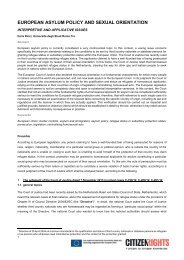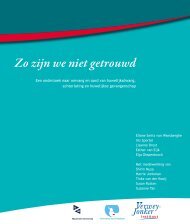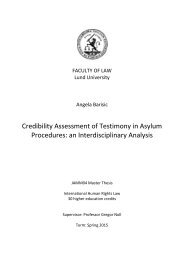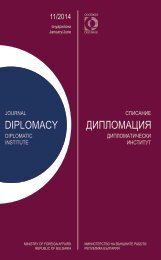AEMI
AEMI-2016-web
AEMI-2016-web
Create successful ePaper yourself
Turn your PDF publications into a flip-book with our unique Google optimized e-Paper software.
FEDERICA MORETTI<br />
ipants: Italy emerges both as a desired<br />
and a not-for-now country in the stories.<br />
Thus, Italy’s representations display<br />
a well-recognized feature of the imaginaries,<br />
namely that they are not unidirectional,<br />
but to be read “in terms of<br />
co- and counter-imaginaries” (Salazar,<br />
2011b, p. 578).<br />
The same twist also reverberates on<br />
the lives of the people involved into the<br />
research. In the next paragraph I shall<br />
then focus on the relationship amidst<br />
imaginaries and reality, to investigate<br />
how the participants’ conceptions reflect<br />
on their life choices.<br />
Reviving Italy: Life Choices<br />
The Italian language always inspired me.<br />
It is part of me. (Carmen)<br />
The ethnographic research revealed imaginaries<br />
of Italy characterized by several<br />
remarkable features; they are, in fact, at<br />
the same time, manifold, diverse, unique<br />
and shared, similar and stereotypical.<br />
From the stories collected emerged<br />
that places, senses, past, present and<br />
future are all linked by the power of<br />
imagination into variegated mental<br />
conceptions. So, one might think that<br />
imaginaries are purely mental, for they<br />
solely belong to the realm of the mind<br />
and they bear no influence on the empirical<br />
lives. Such conception would<br />
however be flawed, since imaginaries<br />
do not merely concern the individuals’<br />
conception of reality; rather, they<br />
likewise shape reality itself. As protean<br />
representational assemblages, the imaginaries<br />
are involved in a circular relationship<br />
with reality: for the meta- and<br />
empirical dimensions are intertwined,<br />
and the mental images influences the<br />
187<br />
practical life of the individuals. In light<br />
of the past – as shaped/evoked through<br />
the imaginaries –, people experience<br />
the present, while building expectations<br />
about the future. Hence, imaginaries<br />
navigate through the everyday travel of<br />
life.<br />
What should, then, be understood as<br />
the potential of imaginaries? How do<br />
they influence everyday lives, shaping<br />
the present and future choices? In this<br />
section, I shall argue that they provide<br />
people with the power to materialize<br />
their mental image.<br />
Therefore, I shall elaborate now on<br />
the second question, thus discussing<br />
how imaginaries open up to various<br />
courses of action. Although concisely, I<br />
shall endeavour to illustrate how sharp<br />
is the influence of Italy’s imaginaries on<br />
life choices.<br />
Thereby, I shall move in the wake of<br />
Vigh (2006), and analyse the prospective<br />
scopes of the imagination to understand<br />
the role of the imaginary in<br />
people’s mapping of their life trajectories<br />
(Sneath, 2009). In fact, the stories<br />
portray how Italy’s imaginaries – and<br />
the thereby shaped identities – contribute<br />
directing the informants’ life<br />
choices, thus determining what their future<br />
ought to have become: from moving<br />
abroad, to pursue a work/academic<br />
career, as well as the choice of not-fornow<br />
future in Italy.<br />
To give a taste of the results, I shall<br />
focus on Sidney’s narrative about how<br />
his imaginaries influenced his decisions<br />
Sidney is a young man, is born and<br />
grew up in Palermo. As a boy, he nourished<br />
the image of Italy as a troublesome<br />
country. He saw it as a not much<br />
to offer, no-future land. His idea and









